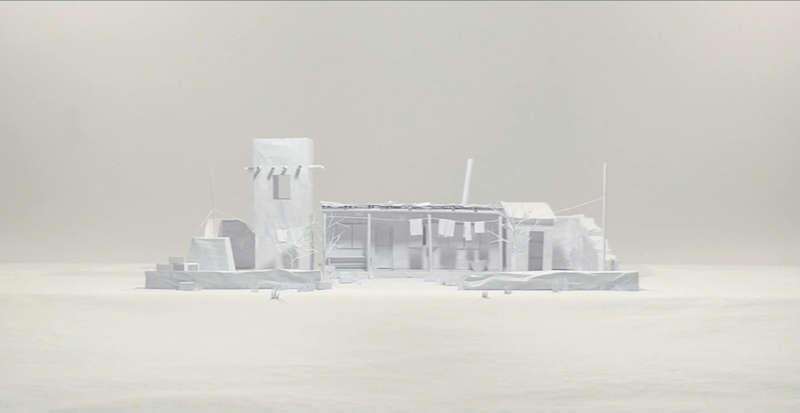
Accueil > Les rubriques > Appareil > Société > War Games
War Games
Ha Taebum
, et
“I collect news photographs about different incidents that I find on the Internet, and reconfigure them as miniature models. Then I photograph the model again to produce the same structure and feel as the original photograph. But when I reproduce the scene with the model, the carnage is neutered by the white color, and the details are eliminated because the originals I use are rather small in size. So the artificial, miniaturized forms and the images in the photographs give a sense that is quite different from reality. The scene seems to be as tranquil and beautiful as a Greek ruin—and humanity, so thoughtless and brutal.”
Ha Tae Bum - wargames from TK-21 on Vimeo.
At first glance, Tae-Bum Ha’s white landscapes, with their coats of settled white dust or snow and their crumbling corners, seem like ancient historic sites or romantic ruins. But for the most part, Ha’s scenes show actual catastrophes wrought by deliberate violence—the aftermath of terrorism in Pakistan, Norway, or New York ; the site of a devastating fire in Seoul’s Yongsan district ; the results of an artillery attack on Yeonpyeong Island in northwestern South Korea. These landscapes also include sites that are soon to disappear, such as flophouse villages and the Changsin redevelopment zone in Seoul—in other words, places where disaster or violence has become an everyday occurrence. These scenes of mass or total destruction emerged from incidents reported in the newspaper, on the Internet, or in other media sources. Most of the photographs show actual calamities, but the artist himself did not take the original pictures. Ha seeks to emphasize the perspective on the incident, rather than the incident itself. For example, the works in his Imagination series do not allow the viewer to take in the entire incident with a single glance. These differ from his actuality series, where he reproduces scenes of incidents that he himself has created in everyday settings where accidents can occur, like a kitchen or an office. This series emanates a sense of tranquility combined with tension, since the viewer has to look very closely to spot the potential hazard in every scene. Here, Ha is speaking to the ubiquity of violence, its routine nature. Whether we openly admit it or not, accidents do not simply visit us. This is especially true for episodes whose meaning can completely change depending on the perspective and interpretation, such as a news photograph depicting a clash of interest and power between groups. Ha produces multiple levels of analysis for these instances by a process of secondary interpretation in which he reproduces news photographs as tertiary miniature models, which are then also photographed.
This is not simply a matter of parallel movement from surface to surface, as in Photoshop processing. His final products are digital prints of white landscapes, where the whole image has been color-tuned to the same tone. But the work involves a long manual process that demands patience and technique. One notable variation between the models and the original photos is that all of the figures are removed, bringing the setting to the fore. The white surfaces, reminiscent of plaster casts, acquire a vivid sense of texture and shadow that would otherwise not be visible. So careful is this process that the artist sometimes exhibits the aesthetic approach of surrendering himself to the details of the surfaces, while setting the core meaning of the incident aside in parentheses. The knowledge that most of the figures that Ha removes from the pictures are either dead or fatally wounded indicates another aspect of these scenes of colliding forces. The absent bodies represent an unconscious dimension of the incident outside the foreground. During Ha’s modeling process, he alters the scale and color of the setting and removes the people, thereby emphasizing the public’s insensibility towards these disasters. Meanwhile, Ha’s video installation pieces, where paper weapons or model paper cities are trampled by a dancer, refer to tragic incidents that are consumed as casually as a sheet of paper. In today’s world, it seems that indiscriminate destruction is little more than a game or a dance. In the modern era, the world is constantly being compressed through globalization, and conflicts and contradictions frequently erupt between nations and societies. Thus, without any thought, the public consumes incidents with clear societal causes as just so much spectacle. And the violence is repeated and reproduced by the media’s distortion of the incident and the perspective of the bystander, who is little more than a consumer of spectacle.
